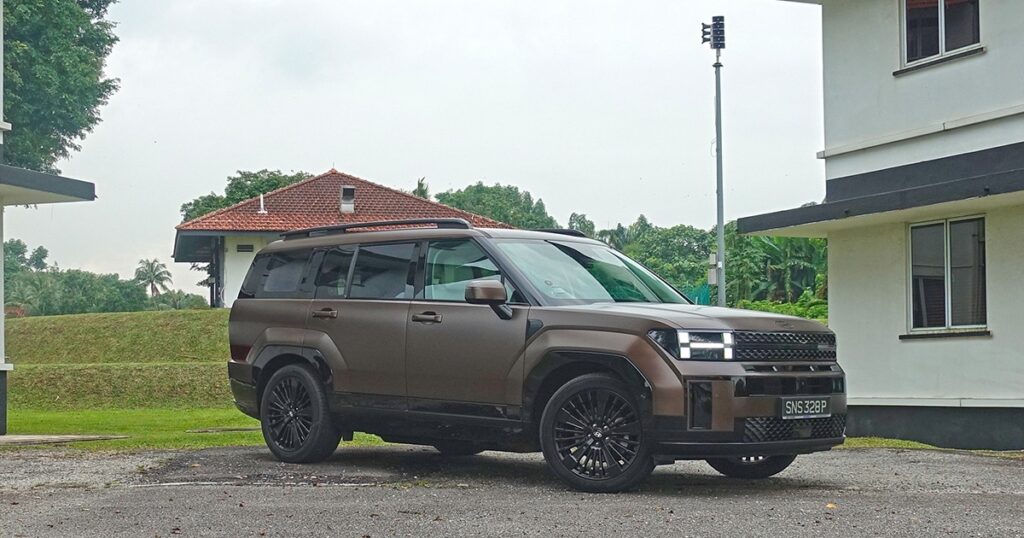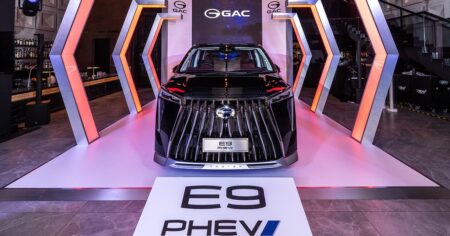When I first laid eyes on the new Hyundai Santa Fe, I did a bit of a double take.
The car’s resemblance to a Land Rover is hard to ignore. It’s not quite exactly like a Land Rover, but it’s close enough to be mistaken for one from afar.
Perhaps that’s an indication of Hyundai’s aspirations for the brand, where it aims to compete at the premium end of the market. Does the Santa Fe make a convincing case though?
What’s the deal with the new Santa Fe?
Let’s first examine the Santa Fe’s unique design.
The car’s angular and boxy looks give it a muscular and rugged stance. It certainly has a lot of presence, with a kind of no-nonsense demeanour that could strike fear into other road users.
It helps too that the car is pretty sizeable, at over 4.8 metres long and 1.9 metres wide. The combination of the test car’s Earthy Bronze shade and black detailing further enhances the Santa Fe’s menacing looks, and it’s certainly not a car you want to mess with on the roads.
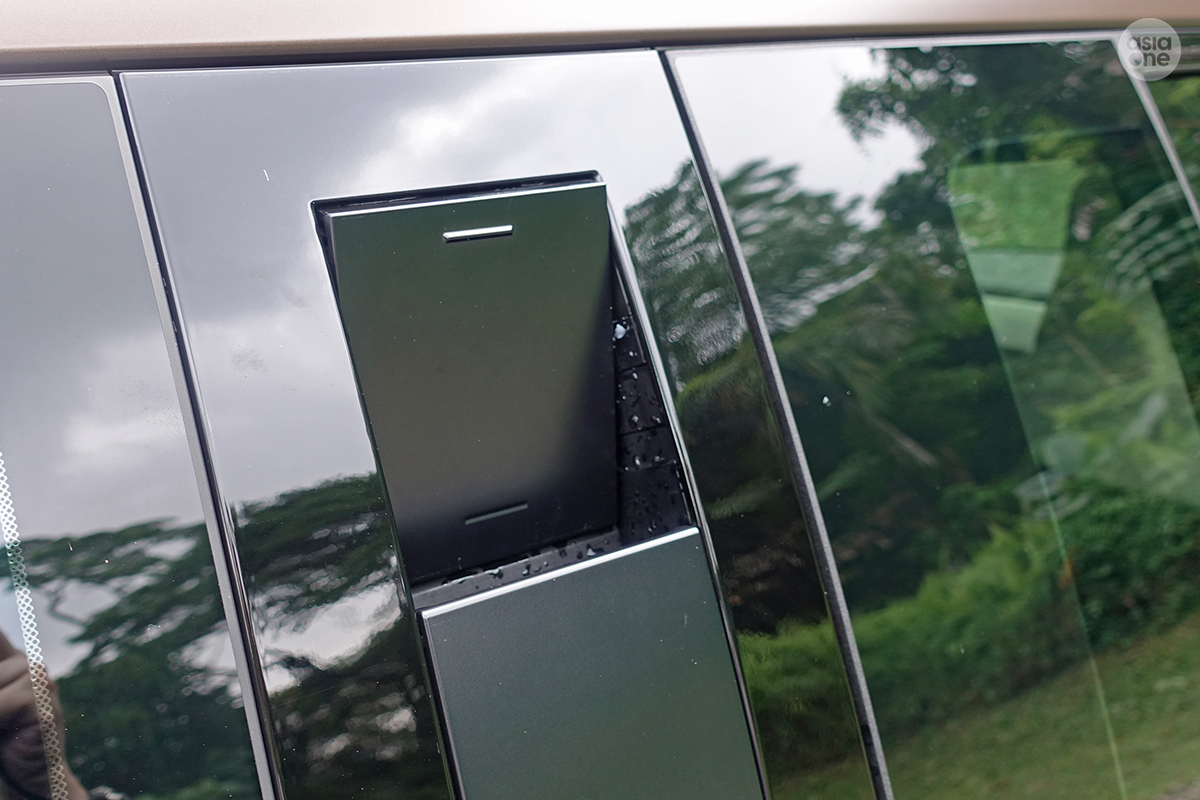
There are some interesting styling details too. Hidden on the C-pillars are what Hyundai calls the Assist Handle, and its main function is to allow one to easily climb up the car to reach whatever is placed on the roof, like a storage box for example.
The idea is that Hyundai envisions the Santa Fe to be used as a lifestyle vehicle for outdoor activities, which also explains the chunky looks somewhat.
It’s perhaps not especially relevant in the Singaporean context, but if you do enjoy going camping in the Malaysian forest, for example, it’s good to know that the Santa Fe is up for the job.
So it’s rugged on the outside, but what is it like inside?
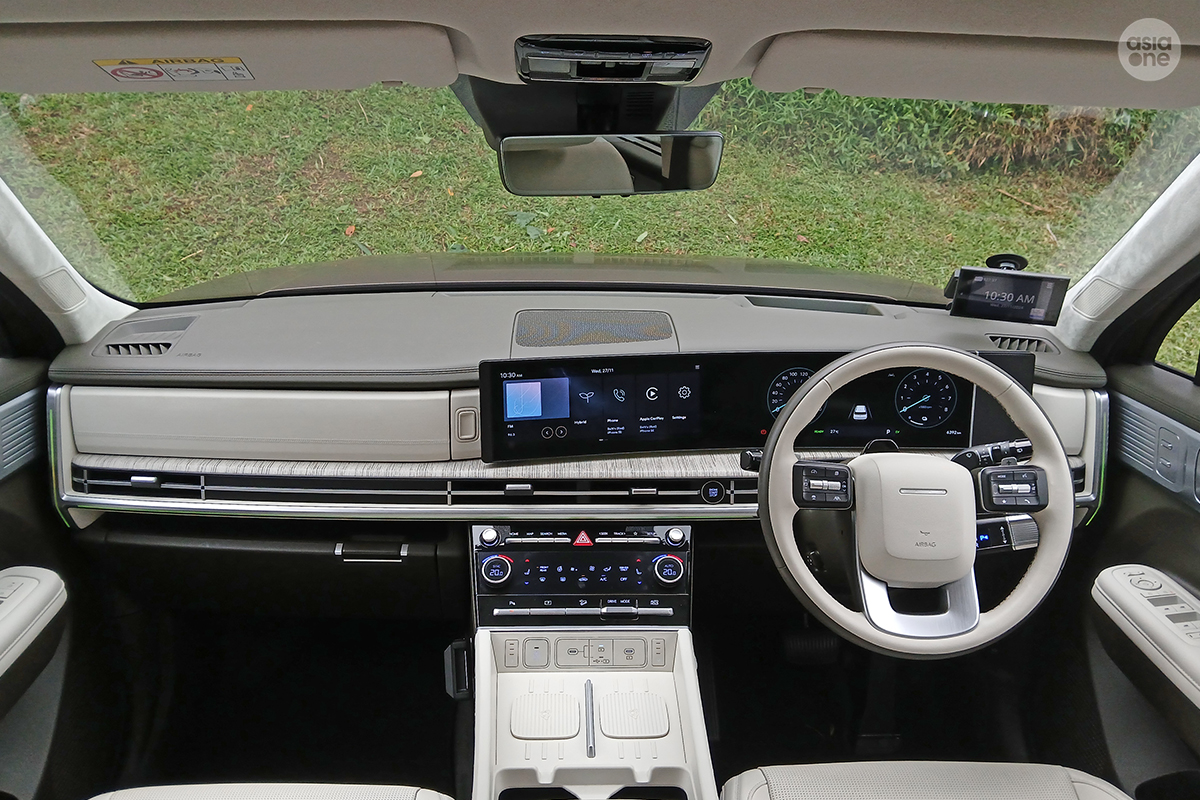
That Land Rover-theme sorta continues inside, with the Santa Fe’s cabin featuring cues that are seemingly inspired from the famed off-road carmaker.
The steering wheel, for instance, is suspiciously similar, with its squarish design and large controls on the spokes. The control panel for the air con, with its combination of physical and haptic touch controls located on the lower part of the centre console, also looks like it’s lifted out from a Land Rover.
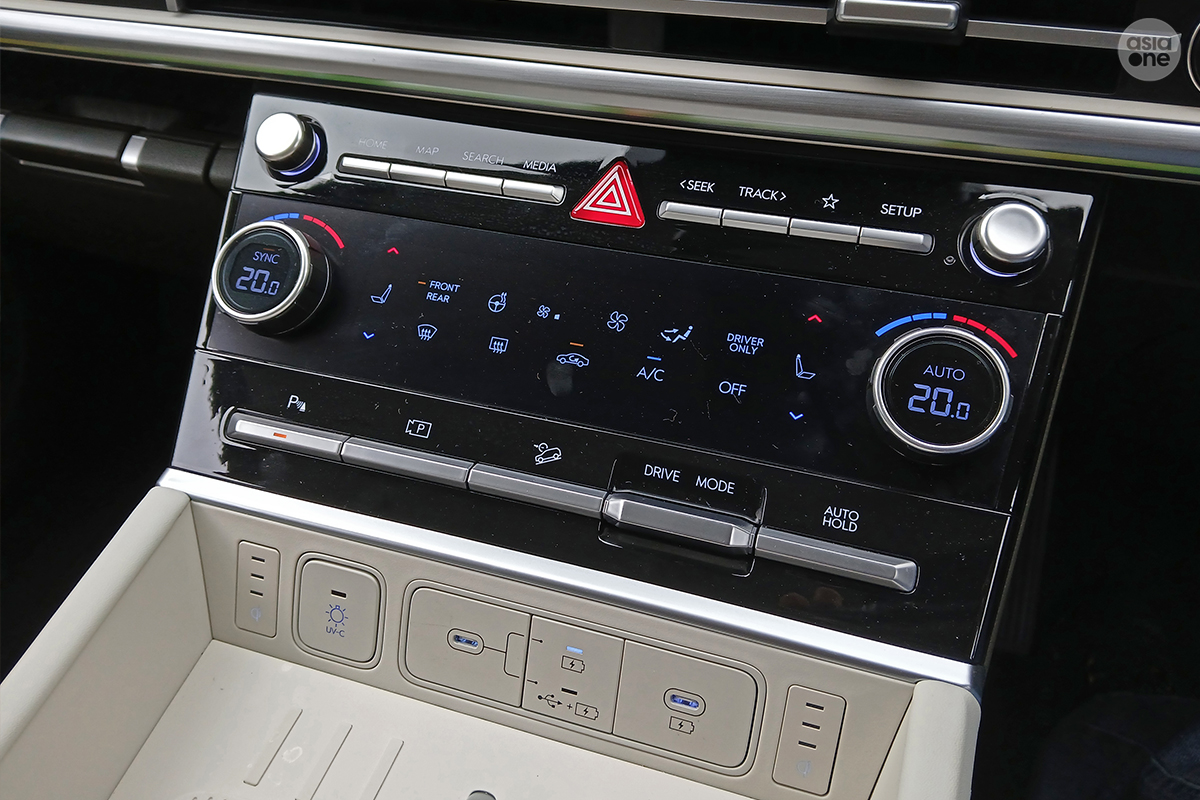
There are some handy and practical touches that highlight the Santa Fe’s utilitarian purpose though. For example, you get two wireless smartphone chargers, a large storage unit that can be accessed from both the front and rear, and a compartment above the glovebox that offers ultraviolet sterilisation for your small items.
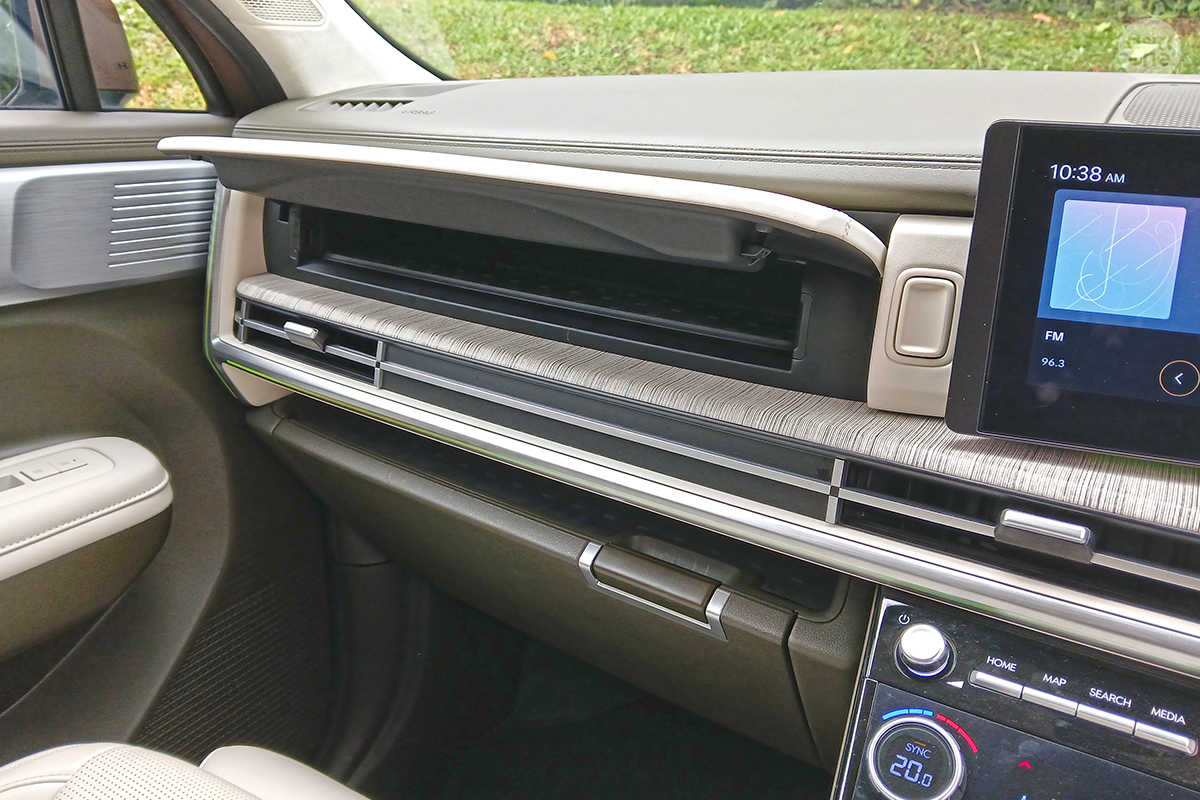
It’s also exceedingly well-equipped. You get the large dual-screen setup first pioneered by BMW and now increasingly commonplace on other cars, and in the Santa Fe consists of two 12.3-inch screens combined to look like one large curved display.
Other standard features include ventilated front seats, heated rear seats, lots of USB charging ports everywhere, a head-up display, and a large panoramic sunroof.
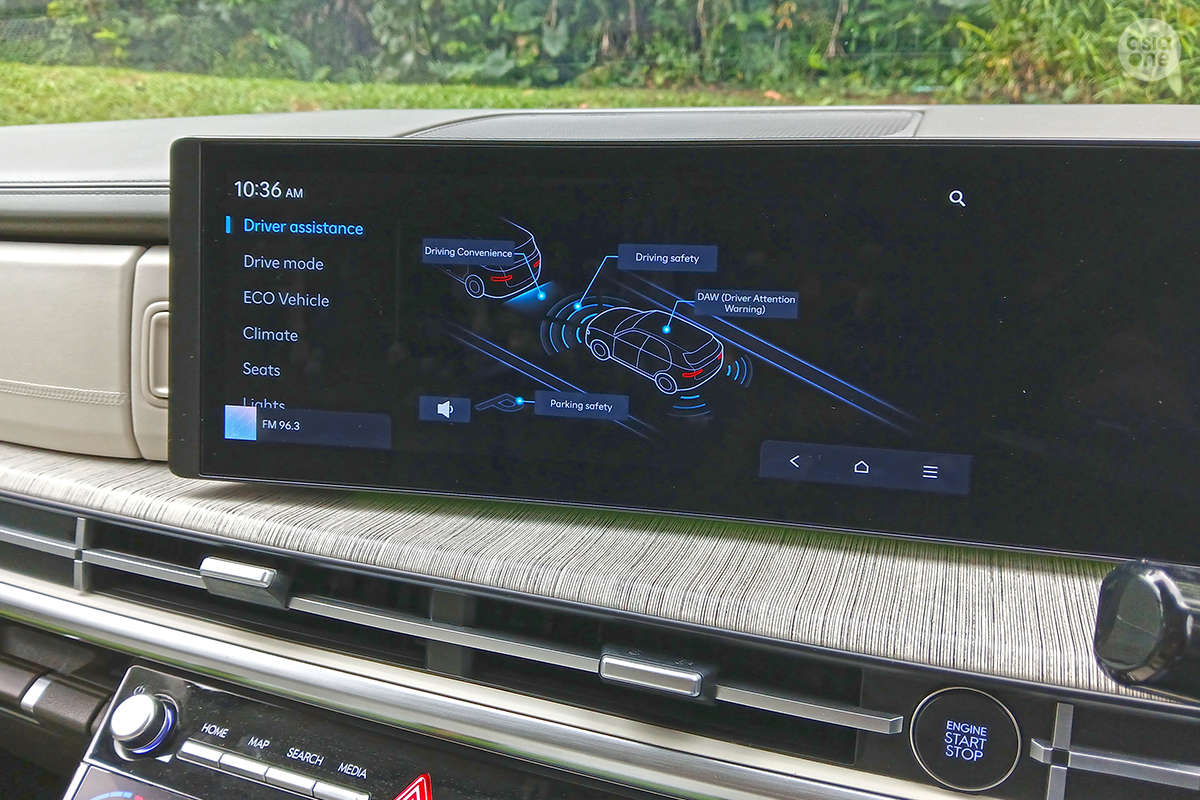
There are also the usual driver assistance features like adaptive cruise control, blind spot alert and collision warning, as well as something called smart parking assist which lets you move the car in and out of tight parking lots using just the remote. Handy for such a big car.
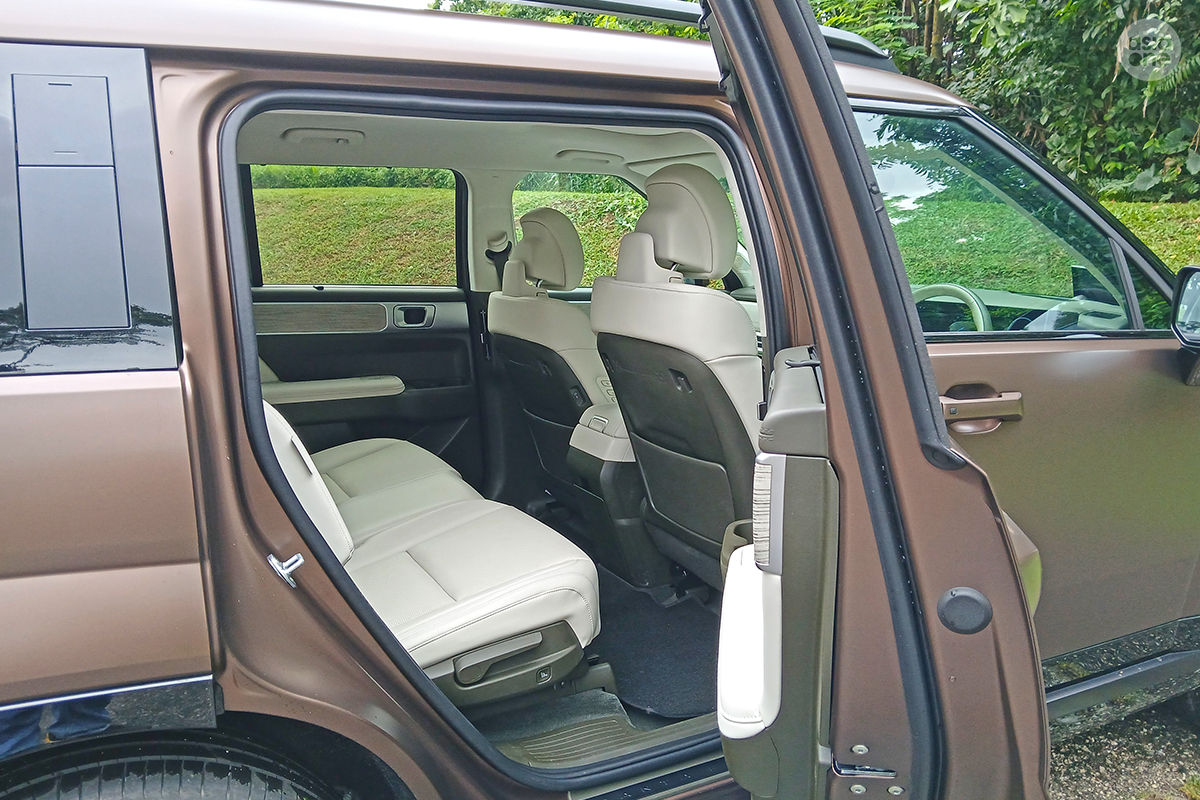
The rear passenger experience is best described as comfortable and spacious. There’s obviously lots of headroom thanks to the car’s square and upright design, but there is also plenty of legroom to stretch out as well.
The seats themselves can be adjusted back and forth for more space, while there are also lots of storage space everywhere.
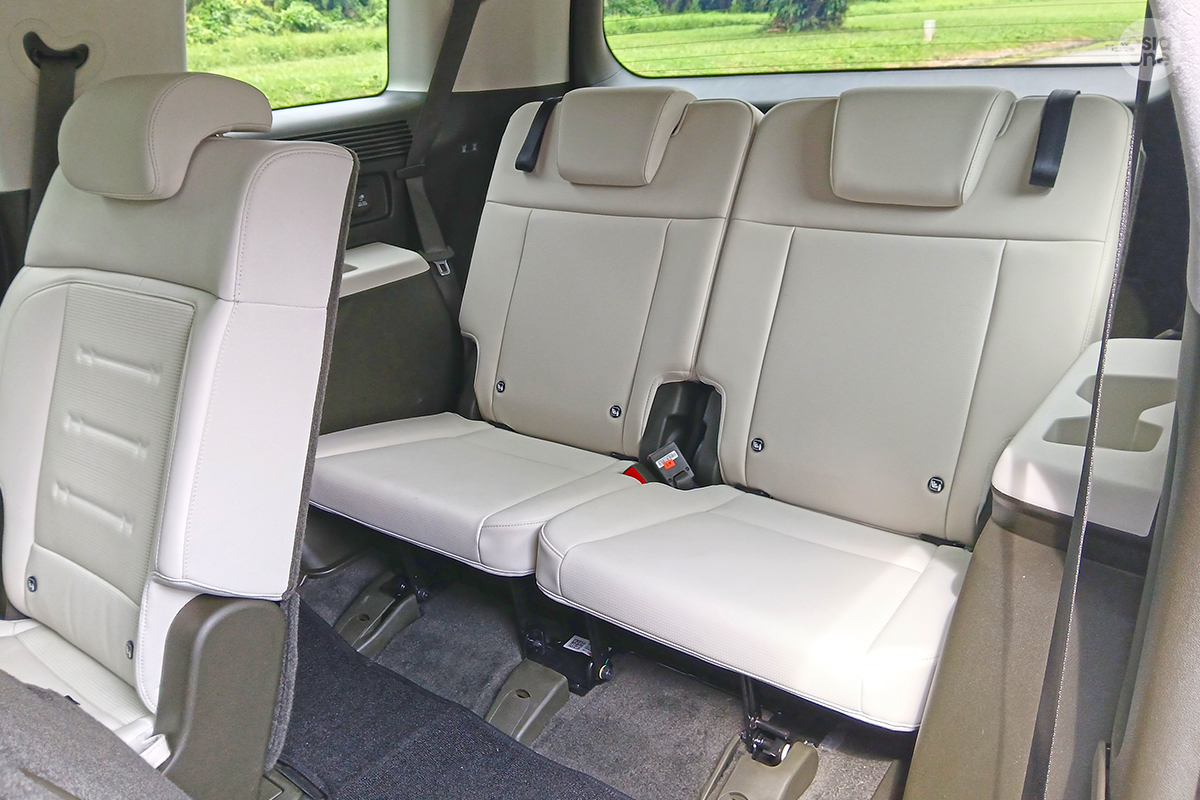
The third row of seats are somewhat tighter in comparison, but it’s still reasonable enough to accommodate regular sized people without them having to amputate their legs.
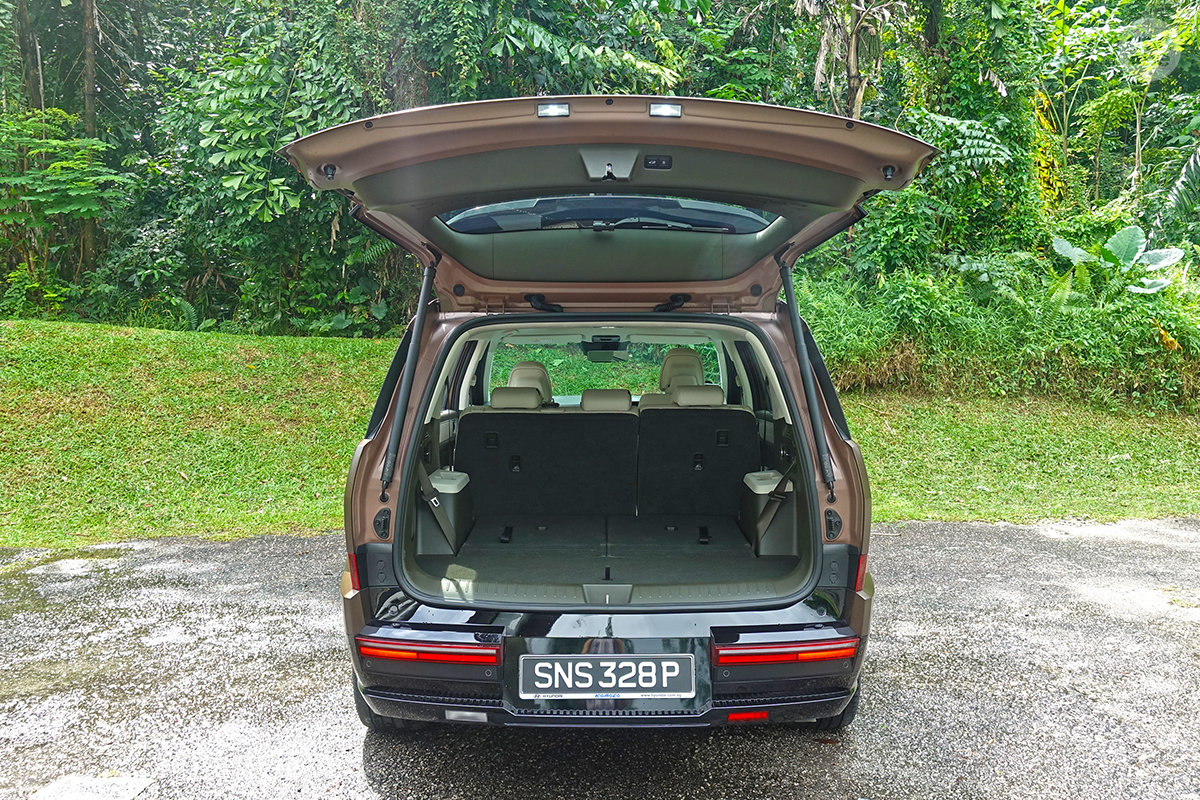
In terms of cargo space, the Santa Fe offers a pretty generous 628 litres of carrying capacity if you’re not using the third-row seats. If you fold the second-row seats down as well though, you get an absolutely colossal 1,949 litres of space, which should come in handy if you’re moving house.
How does it fare on the move though?
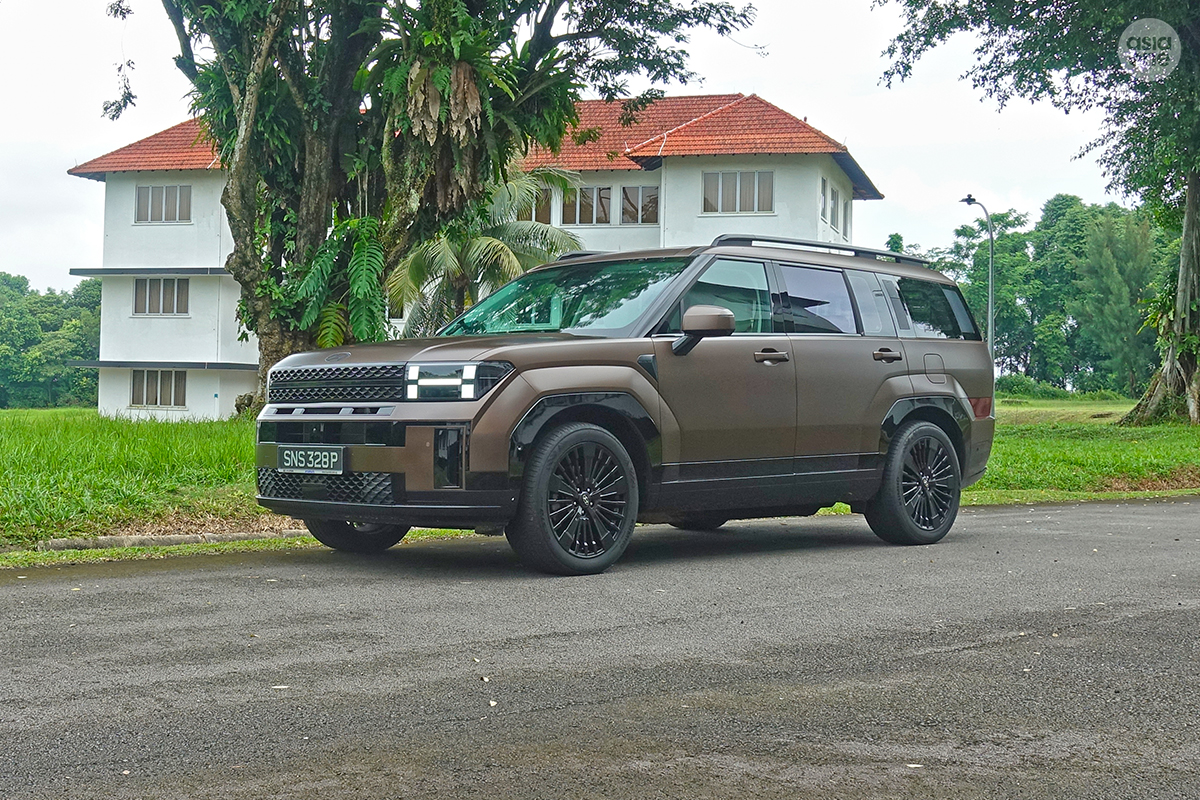
When it comes to actually moving the Santa Fe, the car mostly does an adequate job.
It features the same 1.6-litre turbocharged hybrid drivetrain as its cousin, the Kia Sorento Hybrid, which means it develops a total power output of 212hp and 366Nm of torque.
Those are impressive figures for a 1.6-litre engine capacity, and while it allows the car to make decent progress, it’s also worth bearing in mind that the Santa Fe weighs nearly two tonnes, so that’s quite a lot of car to lug around.
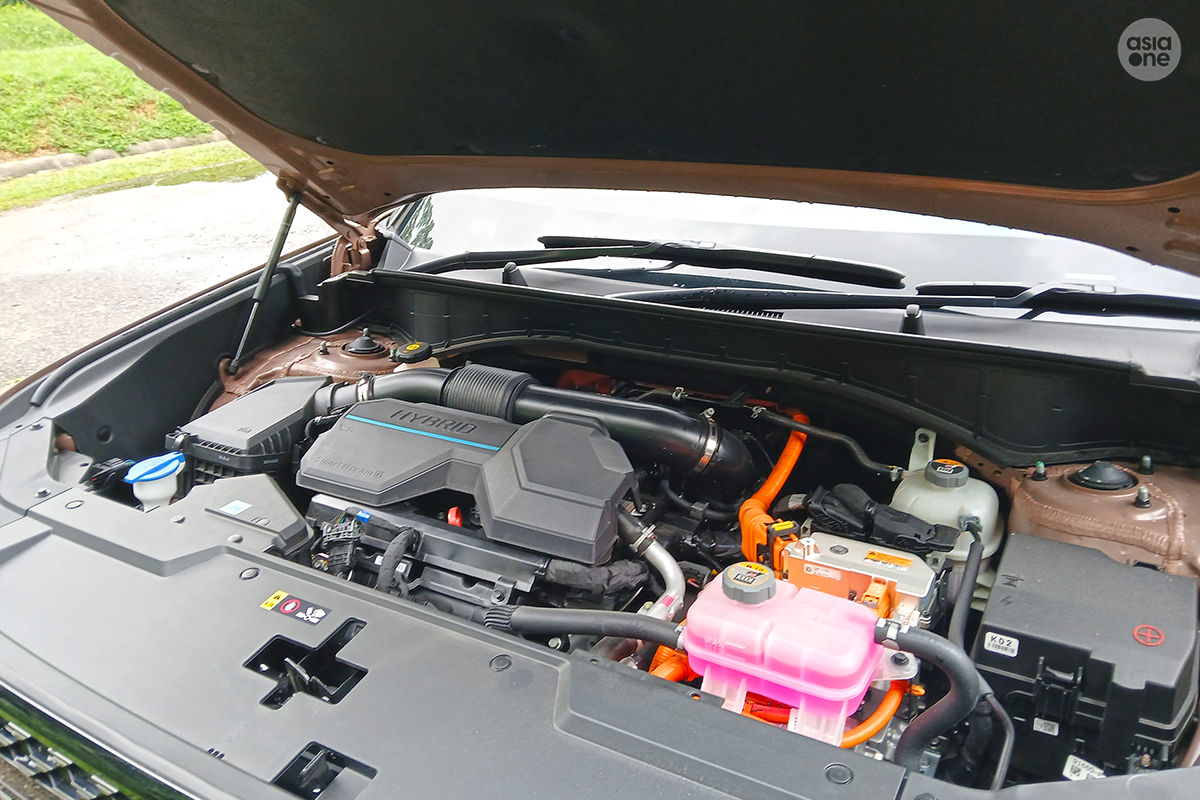
As such, the Santa Fe prefers that you take it easy rather than drive it with enthusiasm. The power comes in smoothly, and it gets up to speed in a calm and composed manner, although its throttle could do with a bit more responsiveness.
It really does feel like the Santa Fe is set up to be a gentle giant despite its rugged looks. The soft suspension means that it soaks up road undulations exceptionally well, but the car also tends to wallow a bit while on the move.
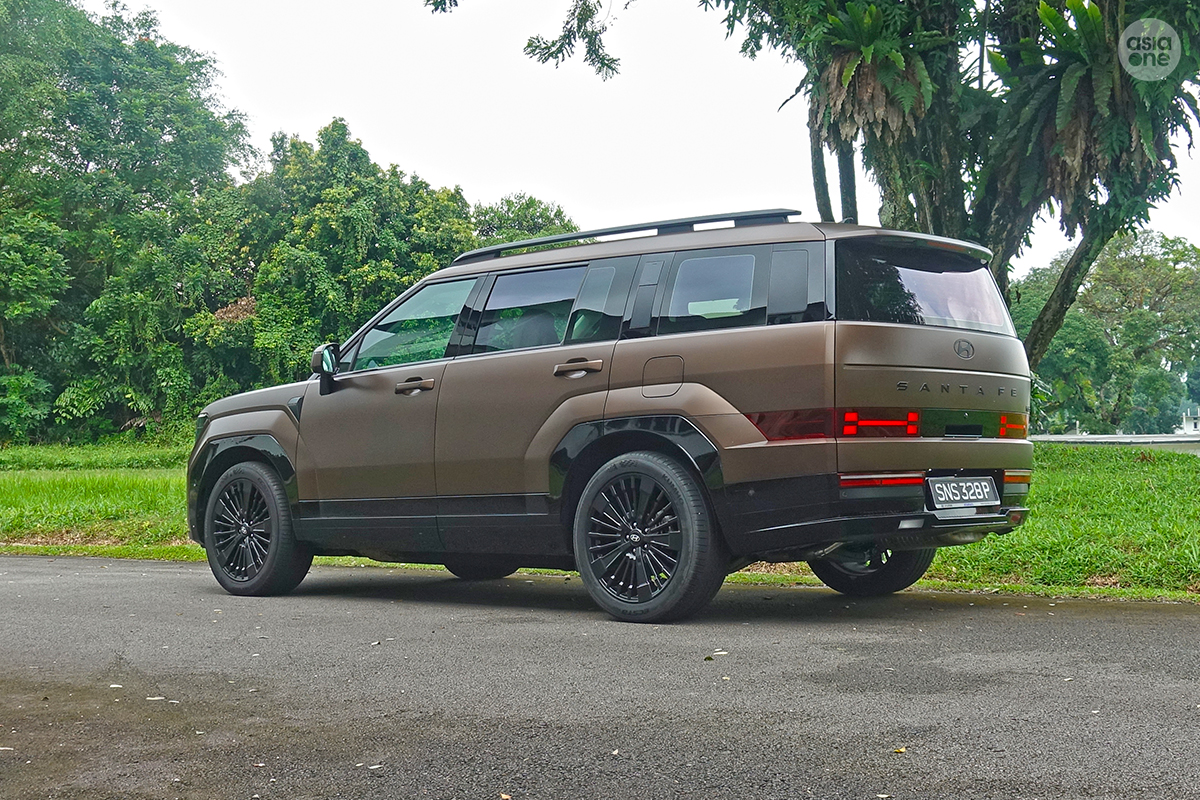
The sensation feels like a boat rocking gently at sea, and while most will find it soothing, some might find it a tad discomforting.
Similarly, the softly-sprung setup means that the Santa Fe is not exactly an adept handler in the bends. It copes well enough mostly, but you can definitely feel its size and weight under cornering.
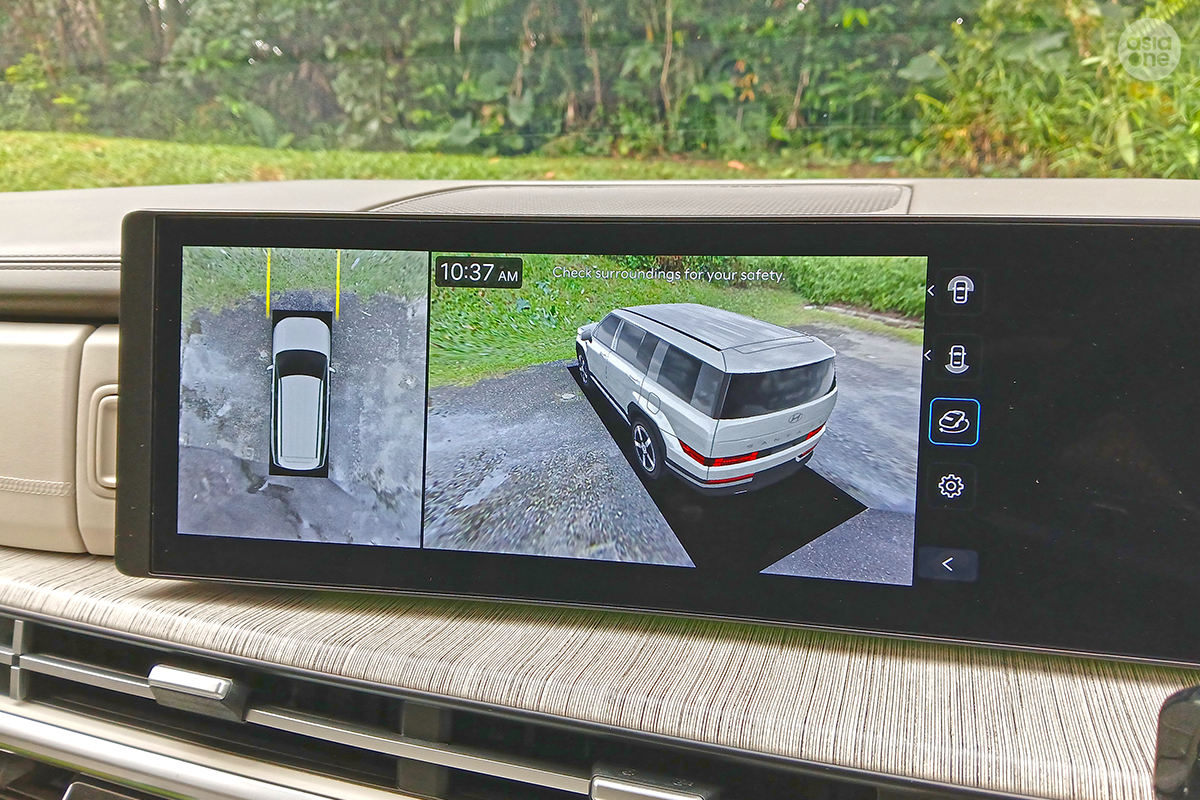
Thankfully there are an army of cameras all around the car so at least that helps with manoeuvrability a little bit.
Should I buy one then?
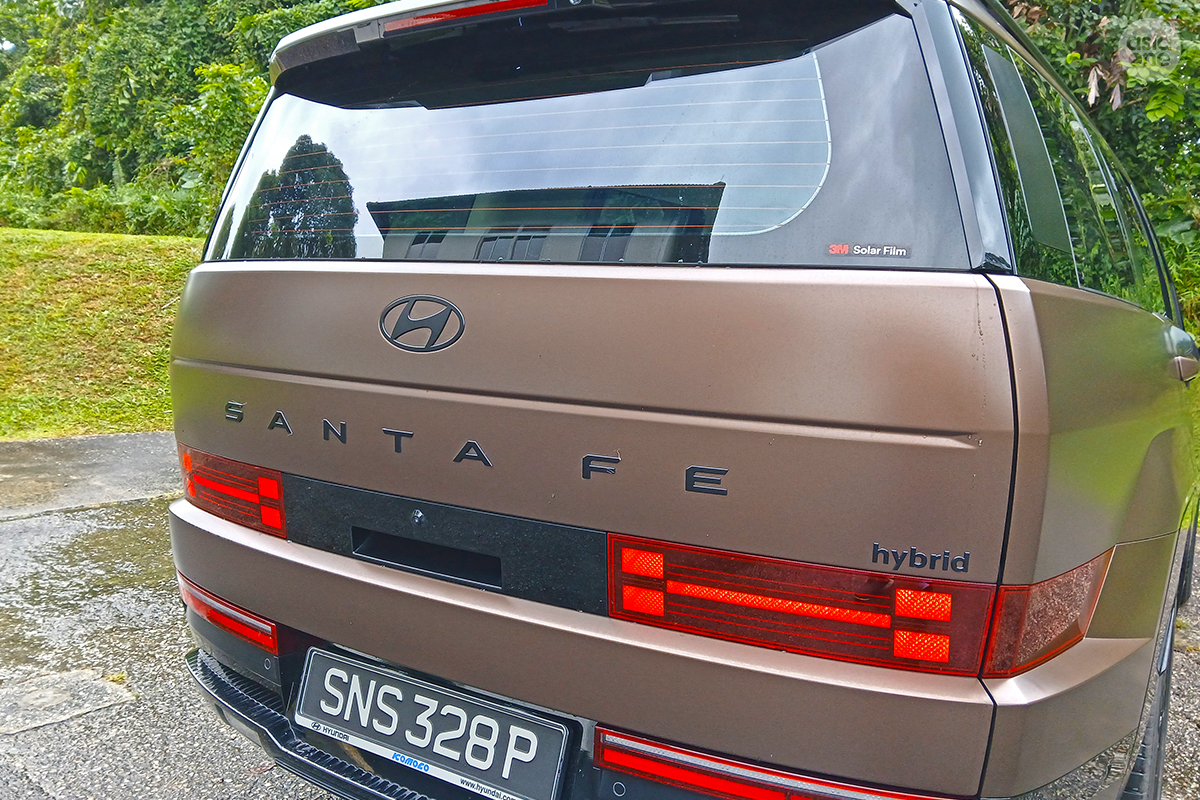
At $292,999 with COE (as of April 2025) in this top-spec Calligraphy 7-seater trim, the Santa Fe is not exactly cheap, and its price tag might come as a shock for those who are used to seeing Korean cars catering for more affordable budgets.
You can knock 20 grand off the price by opting for the standard non-Calligraphy version, but in turn you lose quite a lot of the nice features like the ventilated and heated seats, the head-up display, the panoramic sunroof, the C-pillar grab handles, and the smart parking assist function, among others.
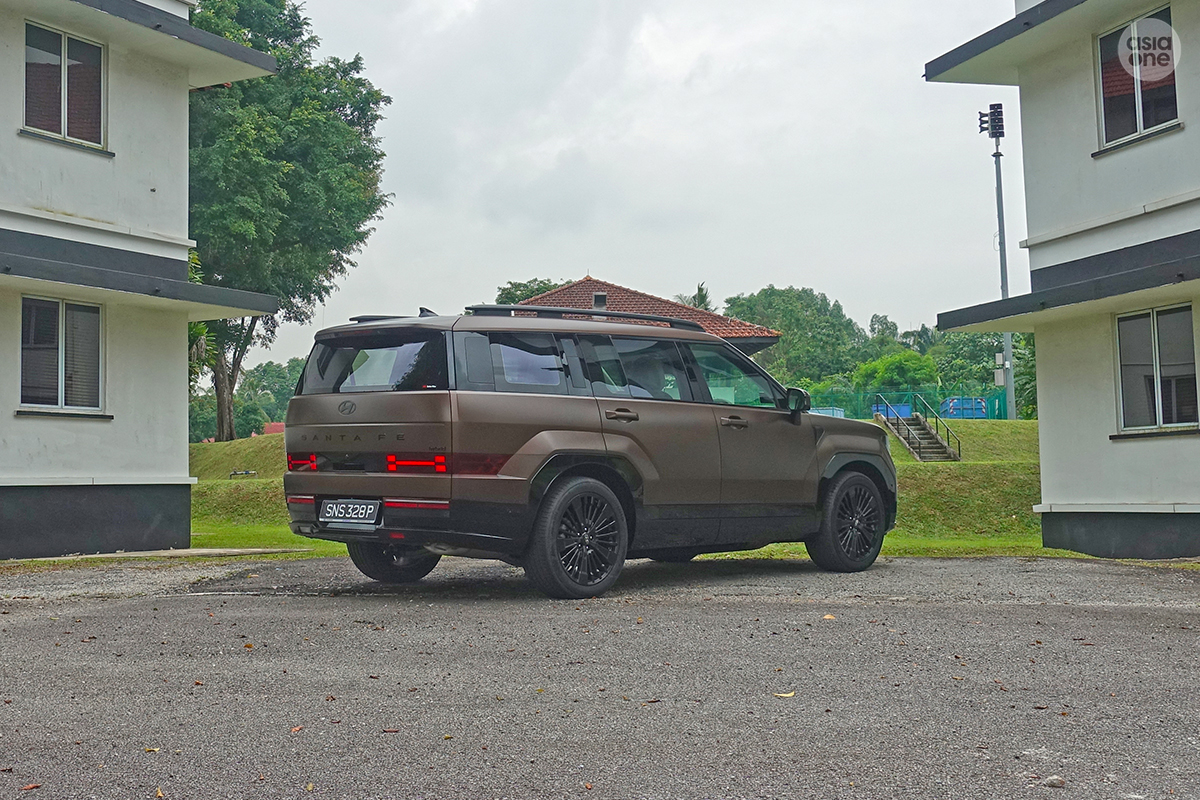
Perhaps instead of seeing it as an expensive Hyundai though, one can view the Santa Fe as an alternative to a Land Rover. After all, it looks like one (mostly) and offers quite a number of luxury features that wouldn’t be out of place in far more expensive cars.
While it doesn’t exactly offer the same sort of driving experience as a Land Rover, for most people that wouldn’t matter quite as much. Viewed in that context, maybe the Santa Fe does represent good value.
[[nid:690566]]
No part of this article can be reproduced without permission from AsiaOne.
Read the full article here






